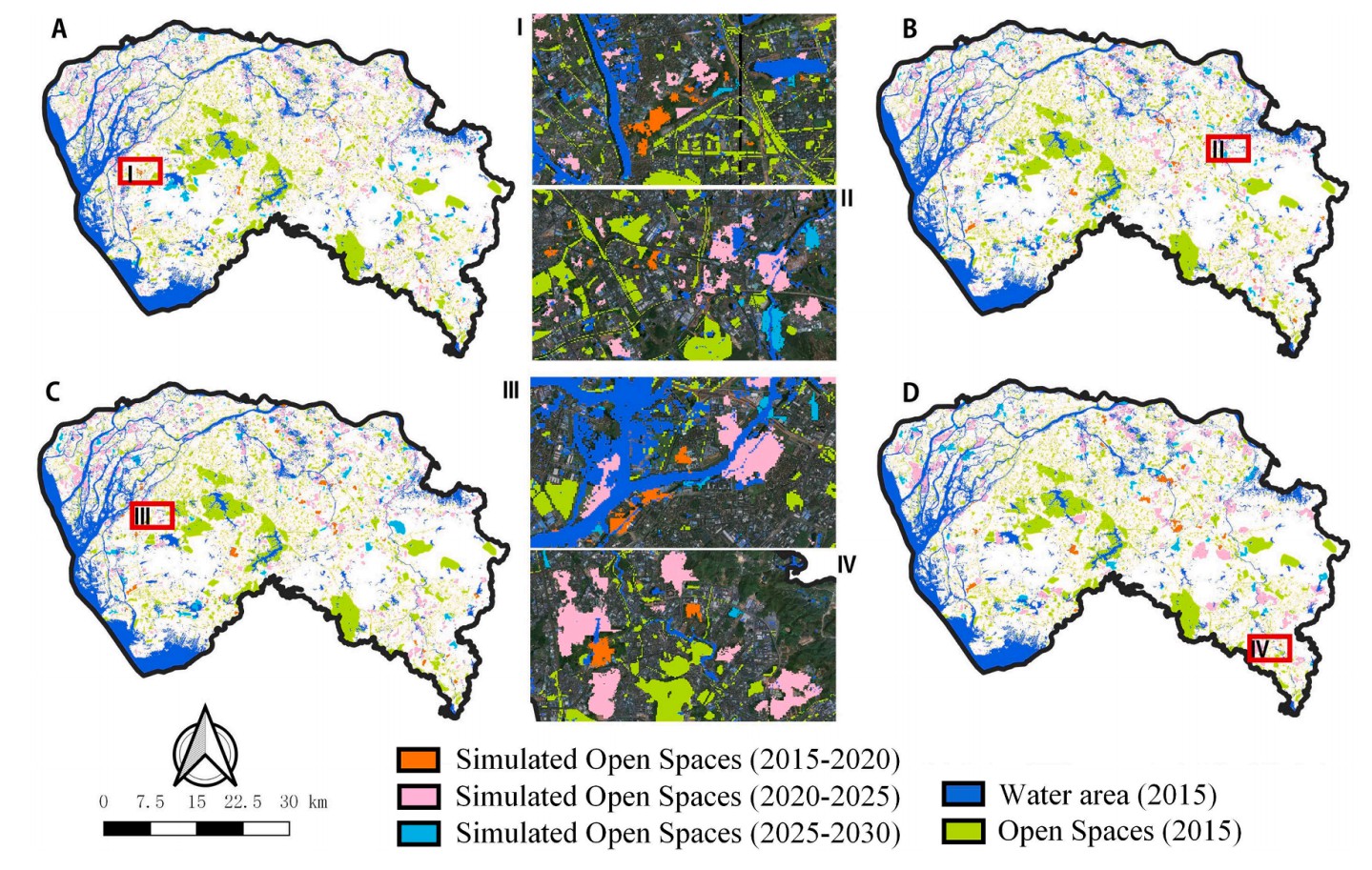Abstract
Open spaces (OSs) in urban areas play a vital role in providing space for habitat conservation and recreation, improving the mental health of urbanites. OSs consist of complicated elements, such as parks, green landscapes and public squares. Few studies have simulated the dynamics of OS with a complete set of these elements. This study proposes a new Open-Space simulation model using cellular automata (OS-CA). A system dynamics model is used to generate scenarios for creating new OS with different construction time-lags. The spatial simulation of OS is allowed to interact with the urban dynamics, constrained by the policies controlling different mean sizes of new OSs. The effectiveness of creating new OS is assessed using the walking accessibility and the population coverage rate. The OS-CA was applied to Dongguan, South China, and validated with multi-source data. The OS simulation from 2015 to 2030 shows that the longer time-lag in building new open spaces, the higher the demand for open space will be in the future. We found that new open spaces are most likely to appear at places near rivers, forests, wetlands, lakes, along the roads, road intersections, or near residential areas. With the growth of OS, the increase rate of OS population coverage becomes slower than that of walking accessibility. We suggest that governments building more small OS within the central urban areas while constructing larger and fewer OS outside of the core urban areas to help improve the overall service level of OS. The OS-CA is available for download at https://github.com/HPSCIL/Open-Space-Cellular_Automata.

Q.E.D.









